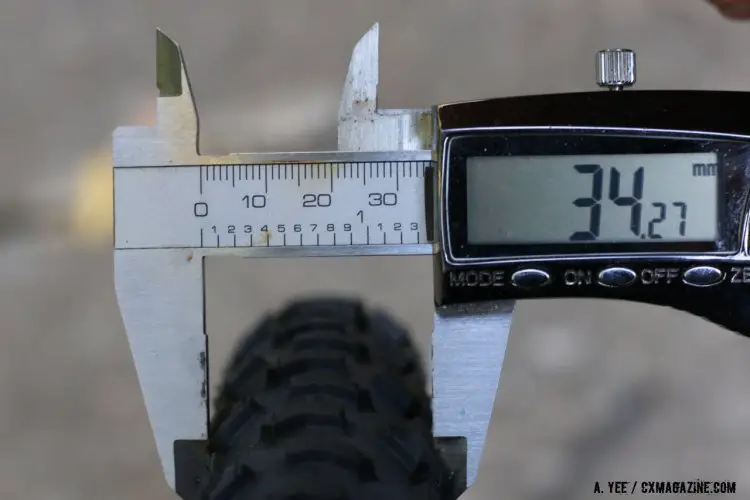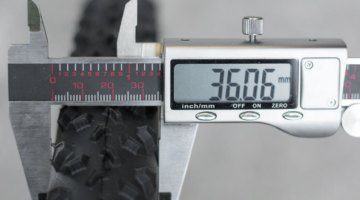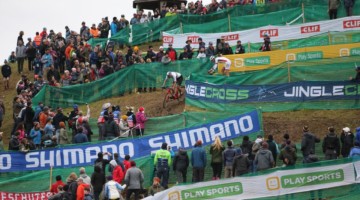by Dan Seaton
New rules officially adopted by the UCI’s Management Committee today will mean major changes for the world’s top races come this fall. The rules, which cover everything from allowed bicycle components to course design, were approved following the recommendation of the UCI’s Cyclocross Commission, and address a number of issues that arose during the 2009-10 season.
UCI to Allow Disc Brakes in Cyclocross
The most significant change among those announced today – and the most polarizing – was the decision to allow the use of disc brakes in international competition. Disc brakes, which are already legal for lower-level races in the US, offer significant advantages over cyclocross’ traditional cantilever brakes, especially in bad conditions, though they are also considerably heavier.
Several riders from the professional ranks expressed their disappointment that the UCI was abandoning a decision that has kept ’cross rooted to a long tradition for years. On Twitter Adam Myerson, a former member of the UCI Cyclocross Commission, wrote:
“Disc brakes are for mountain bikes and motorcycles. Not cyclo-cross bikes.” -Adam Myerson
Others, like Britain’s Ian Field, who pointed out that the rule change does not require racers to use discs, and Jeremy Powers, who noted he never felt the need to use them, seemed more sanguine about the impending changes.
UCI Makes a Big Deal Over Two Millimeters
But at the same time as ’cross was taking one step towards its fat-tired cousin, it was also taking steps in the other direction. The Committee reduced the maximum width of tires from 35mm to 33mm, meaning some riders will have to adapt to slightly narrower tires for next season.
Although not many UCI racers compete on clinchers, this rule could impact those who race with wider tires. It’s important to note that most 700x35c clinchers are undersized and do not measure out to be more than 33c on a standard road rim, according to our comprehensive tire reviews.
When It’s Hot, Hand-Ups Are Not a Crime
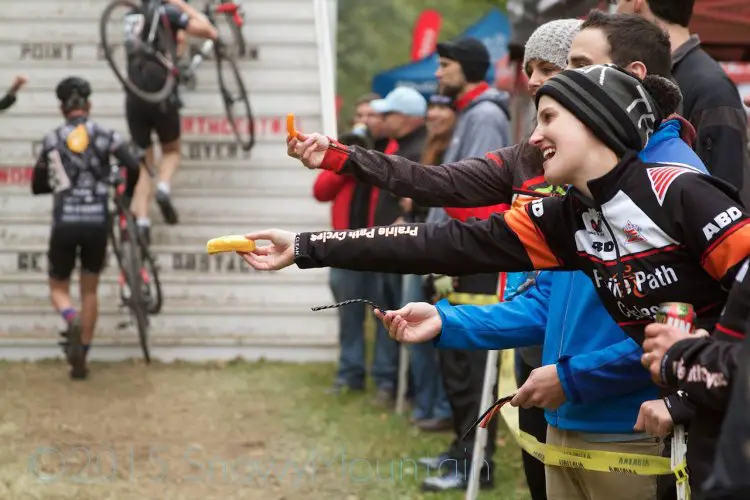
Hand-ups may not be a crime when it’s hot, but this isn’t what the UCI has in mind. photo: Twinkies, Twizzlers (both black and red), and Cheetos were some of the favorite hand-ups offered to a Cat 4/5 field. Photo by SnowyMountain Photography
The UCI also moved to allow hand-ups during races when the temperature is over 20 degrees Celsius (68 degrees Fahrenheit). An unusually warm spell in western Europe during the early part of last season left a number of riders complaining about rules that forbade feeding, most notably former World Champion Niels Albert. After an extremely dry and dusty Vlaamse Houtlandcross race in September, Albert told reporters that the decision to bar feeding was “scandalous“.
Lowering Barriers, Pulling Riders
The rule changes also modified course design and race dynamics themselves, allowing race promoters to include more obstacles than in the past, and to use lower barriers with more distance between then than was previously allowed. Those two changes will make hopping barriers much more a part of successful ’cross racers’ arsenals.
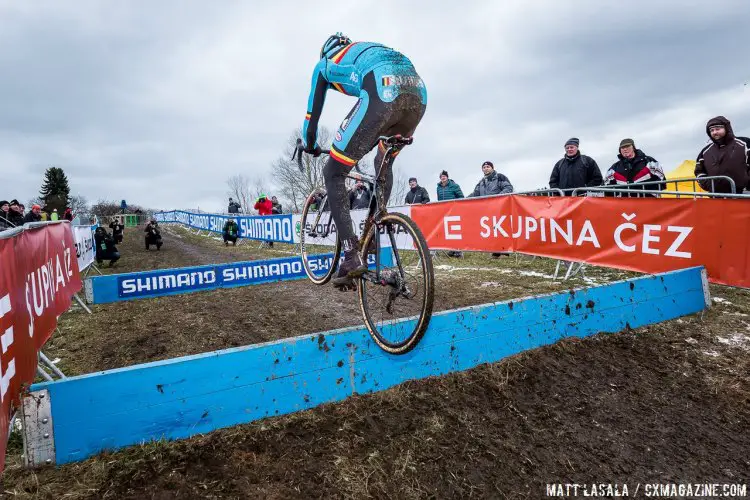
40cm is a maximum barrier height, not a requirement. photo: The barriers are a good time to fly if you have wings. © Matt Lasala / Cyclocross Magazine
Additionally, race officials will now be permitted to pull riders who are more than 80% off the leader’s lap time. The new 80% rule, which will likely impact late-race dynamics, also addresses an issue that came up last year, when a lapped rider interfered with Sven Nys on the final lap of the Igorre World Cup, costing the Belgian Champion any shot at his first World Cup win of the season.
The detailed race rules, which take effect in July, are posted on the UCI web site, as are the rules regarding disc brakes and tire selection.
2010 UCI Cyclocross Complete Rule Changes:
- Disc brakes are now permitted in cyclocross races.
- The maximum allowed tire width has been reduced from 35mm to 33mm.
- The old “6 obstacle limit” has been changed to a “6 man-made obstacle limit”.
- Barriers are no longer required to have a height of 40cm. However, 40cm remains the maximum height for barriers.
- Barriers are now required to be separated by 4-6m.
- Man-made sand pits are now allowed in ’cross races.
- Commissaires are now allowed to authorize feeding when the temperature is above 20 degrees C. Feeds are to be done in the pit lane, but are not permitted during the first two and final two laps.
- Commissaires may now invoke an “80% rule” and pull riders who are behind by more than 80% of the leaders lap time.
- The UCI has established Continental Cyclocross Championships.













